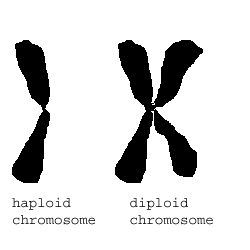Please wait while we process your payment
If you don't see it, please check your spam folder. Sometimes it can end up there.
If you don't see it, please check your spam folder. Sometimes it can end up there.
Please wait while we process your payment

By signing up you agree to our terms and privacy policy.
Don’t have an account? Subscribe now
Create Your Account
Sign up for your FREE 7-day trial
By signing up you agree to our terms and privacy policy.
Already have an account? Log in
Your Email
Choose Your Plan
Individual
Group Discount
Save over 50% with a SparkNotes PLUS Annual Plan!
 payment page
payment page
Purchasing SparkNotes PLUS for a group?
Get Annual Plans at a discount when you buy 2 or more!
Price
$24.99 $18.74 /subscription + tax
Subtotal $37.48 + tax
Save 25% on 2-49 accounts
Save 30% on 50-99 accounts
Want 100 or more? Contact us for a customized plan.
 payment page
payment page
Your Plan
Payment Details
Payment Summary
SparkNotes Plus
You'll be billed after your free trial ends.
7-Day Free Trial
Not Applicable
Renews July 25, 2025 July 18, 2025
Discounts (applied to next billing)
DUE NOW
US $0.00
SNPLUSROCKS20 | 20% Discount
This is not a valid promo code.
Discount Code (one code per order)
SparkNotes PLUS Annual Plan - Group Discount
Qty: 00
SparkNotes Plus subscription is $4.99/month or $24.99/year as selected above. The free trial period is the first 7 days of your subscription. TO CANCEL YOUR SUBSCRIPTION AND AVOID BEING CHARGED, YOU MUST CANCEL BEFORE THE END OF THE FREE TRIAL PERIOD. You may cancel your subscription on your Subscription and Billing page or contact Customer Support at custserv@bn.com. Your subscription will continue automatically once the free trial period is over. Free trial is available to new customers only.
Choose Your Plan
This site is protected by reCAPTCHA and the Google Privacy Policy and Terms of Service apply.
For the next 7 days, you'll have access to awesome PLUS stuff like AP English test prep, No Fear Shakespeare translations and audio, a note-taking tool, personalized dashboard, & much more!
You’ve successfully purchased a group discount. Your group members can use the joining link below to redeem their group membership. You'll also receive an email with the link.
Members will be prompted to log in or create an account to redeem their group membership.
Thanks for creating a SparkNotes account! Continue to start your free trial.
We're sorry, we could not create your account. SparkNotes PLUS is not available in your country. See what countries we’re in.
There was an error creating your account. Please check your payment details and try again.
Please wait while we process your payment

Your PLUS subscription has expired
Please wait while we process your payment
Please wait while we process your payment

The Goal of Cellular Reproduction
Put simply, the goal of cellular reproduction is to "reproduce" a copy of a preexisting cell. Cells achieve this by first copying their contents and then dividing such that each of the resulting two cells has the same components. These processes are a part of a larger cell cycle that also includes periods of preparation for synthesizing copies of cellular components and division. This cycle occurs continuously in most organisms.
Cellular reproduction is a means of creating new life. As we mentioned, cell reproduction does not always result in the creation of an entirely distinct organism. Cell reproduction is also responsible for creating supporting cells in multi-cellular organisms. In these multi-cellular organisms, many rounds of cell reproduction are often necessary to create new individuals, whereas in single-cell organisms, each round of mitosis results in an independent organism.
Since cell reproduction involves the copying old cells into new ones, resulting cells must be faithful enough copies that they can perform the same function as the cell from which it was copied. If the copying process is not fine-tuned, mutations, or errors, can occur in the offspring cells. These mutations can vary from trivial, without physical or biological manifestation, to serious, causing severe disorders or even death.
We have discussed how there are two different types of cellular reproduction. In either of these processes, a main step in the cycle of cellular reproduction is the copying of cell contents. What exactly is copied during this process? The most important cellular components are the chromosomes, which contains all the genetic information for a cell and leads to the specific features, traits, and capabilities of a cell. DNA is packaged into chromosomes in eukaryotic cells. Not all cellular components are copied like DNA. Some structures can be synthesized in a cell from DNA after cell division. Other structures, like the endoplasmic reticulum are broken down during the cell cycle and then re-synthesized after cell division.
In higher organisms each cell usually contains two similar copies of each chromosome. One of these copies is a maternal contribution and the other is a paternal contribution. Together, these are called a homologous pair and each alone is called a homologue. The haploid number of a cell refers to the total number of homologous pairs in a cell (or the number of unique chromosomes). This number varies from species to species; in humans it is 23. The diploid number of a cell refers to the total number of chromosomes in a cell and is equal to two times the haploid number. If the haploid number is thought of as N the diploid number would be 2N. In humans the diploid number is 46.

Please wait while we process your payment

